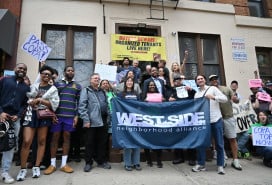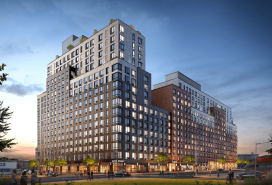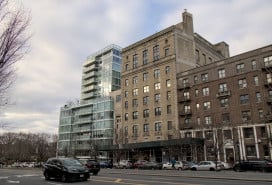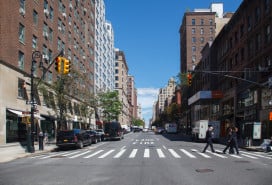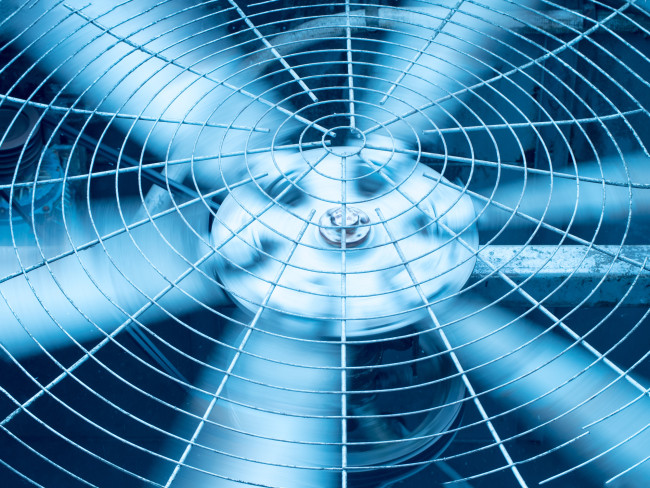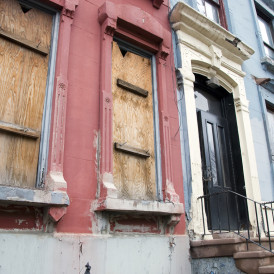How to get a free air conditioner to beat NYC’s summer heat wave
- A state benefit program covers the cost of a new AC unit and its installation
- Make sure to apply quickly if you’re eligible. Funds for the program are limited

If you don't have AC, stay inside, close your shades, and avoid using your stove or oven to keep your apartment cool. Make sure you drink plenty of water too.
iStock
Is it just me, or is it getting pretty hot out there?
New York City is bracing for a heat wave this week, with temperatures that could feel higher than 100 degrees Fahrenheit. The city’s cooling centers are open through Thursday to help New Yorkers beat the heat, and some residents can even score a brand new air conditioning unit through a state program.
The state’s cooling assistance benefit program will cover $800 for the purchase and installation of a window unit, portable AC, or a fan or up to $1,000 for an existing wall sleeve unit for certain eligible New Yorkers this summer.
But don’t wait to apply—funds are awarded on a first-come, first-serve basis. In 2022, the $23 million in state funding for the program ran out by July 8th, though the program had a broader eligibility criteria at the time. This year, Governor Kathy Hochul awarded the program $22 million.
“As we see more severe heat during the summer months due to climate change, it’s vital that we recognize the significant health risks extreme heat poses for New Yorkers with certain medical conditions, as well as young children and seniors,” Hochul said in a statement when applications for the cooling assistance benefit opened in April.
Read on for an overview of how to apply for the Cooling Assistance benefit program.
How to tell if you are eligible
The state Office of Temporary and Disability Assistance (OTDA) program is reserved for New Yorkers who are the most at risk from extreme heat and those with the tightest budgets.
To be eligible, you have to already receive Home Energy Assistance Program (HEAP) benefits—state funds that help residents heat or cool down their homes—or be eligible for cooling assistance.
Plus, at least one person in your household must be 60 years of age or older, be a child under the age of six, or have a documented medical condition that is made worse by extreme heat. At least one member of your household must also be a U.S. citizen or have an immigration status that wouldn’t make them ineligible.
Your household must also meet one three requirements: 1) Your household gets Supplemental Nutrition Assistance Program benefits, one of the OTDA’s temporary assistance benefits, or Code A Supplemental Security Income. 2) Your household already gets a HEAP benefit for heat of $21 or more and you live in subsidized housing where your heat is included in your rent. Or, 3) You meet the income requirements.
For example, a person living alone cannot make more than $3,035 per month to qualify for cooling assistance. That pay cap rises with the more people you live with. Check out the table below to see if you meet the income eligibility requirements.
| Household size | Maximum gross monthly income for 2024 |
|---|---|
| 1 | $3,035 |
| 2 | $3,970 |
| 3 | $4,904 |
| 4 | $5,838 |
| 5 | $6,772 |
| 6 | $7,706 |
| 7+ | For more, check out the full income cap list here. |
Lastly, you’ll qualify if you did not get a HEAP-funded AC unit in the last five years, if your existing AC unit is at least five years old, or if you don’t have one at all.
How do you apply?
You’ll need to show proof that you qualify for the program and that you need it.
For example, you’ll need to show where you live (such as through a rent receipt or a utility bill) and how much money you make (such as through a tax statement or your last four weeks of pay stubs). You’ll also need to prove your identity, and documentation of your medical condition (if you have one).
For a full list of the documentation you’ll need, check out the city’s guide here.
Other ways to stay cool
High temperatures can be dangerous—even deadly—to young children, older adults, and those with pre-existing health conditions. The best way to stay cool is with AC, but if you don’t have one, there are a few other things you can do.
First off, make sure you know your cooling locations. Indoor spaces like libraries, malls, and museums can be great free places to stay for some cool air.
You can find cool places to go near you by using the city’s map here, including cooling centers, which the city opens during heat emergencies. (Those centers will be open today through Thursday, June 20th in response to the heat wave, said Mayor Eric Adams).
“Encourage the people in your life to beat the heat by limiting strenuous outdoor activity, staying hydrated, wearing light clothing, turning on the air conditioning, heading to the pool or beach, or spending time at your local library, museum, or coffee shop,” Zach Iscol, the city’s emergency management commissioner, said in a statement. “Heat is not just a discomfort—it’s life-threatening.”
Stay inside, close your shades, unplug your electronics (but not your AC), and avoid using your stove or oven to keep your apartment cool. Make sure you drink plenty of water too.
You should also watch for signs of heat exhaustion and heat stroke, and call 911 if you need help. See the chart below for the symptoms of heat exhaustion and stroke, according to the NYC Emergency Management agency.
| Symptoms of heat stroke | Symptoms of heat exhaustion |
|---|---|
|
|


